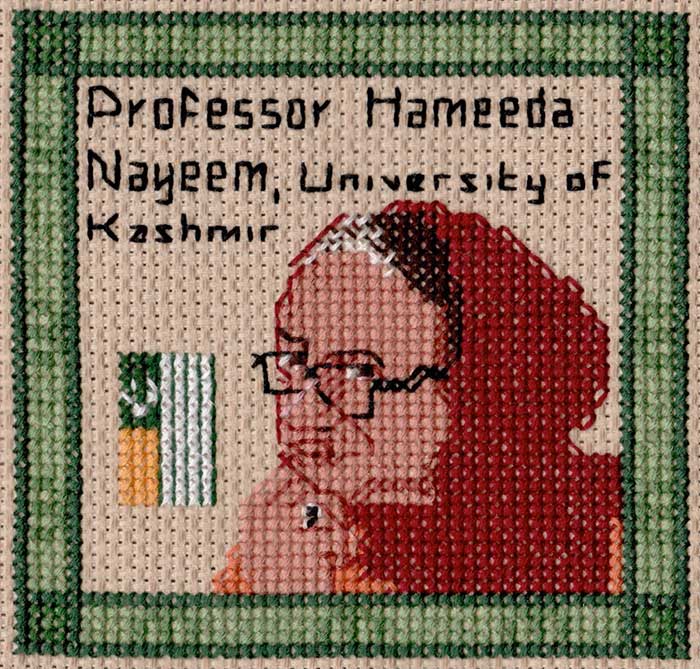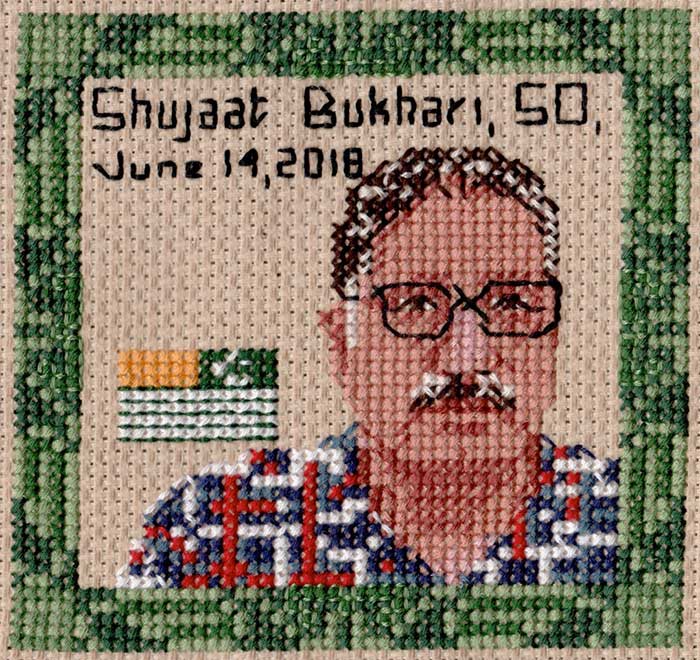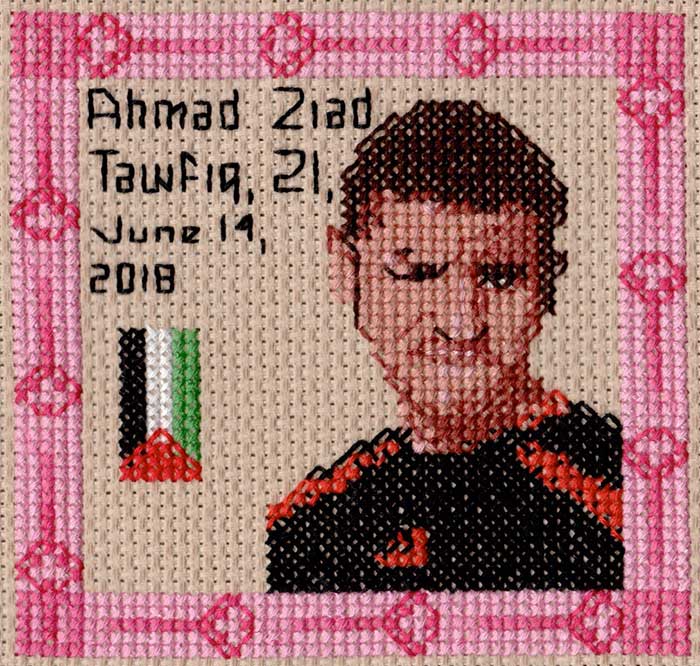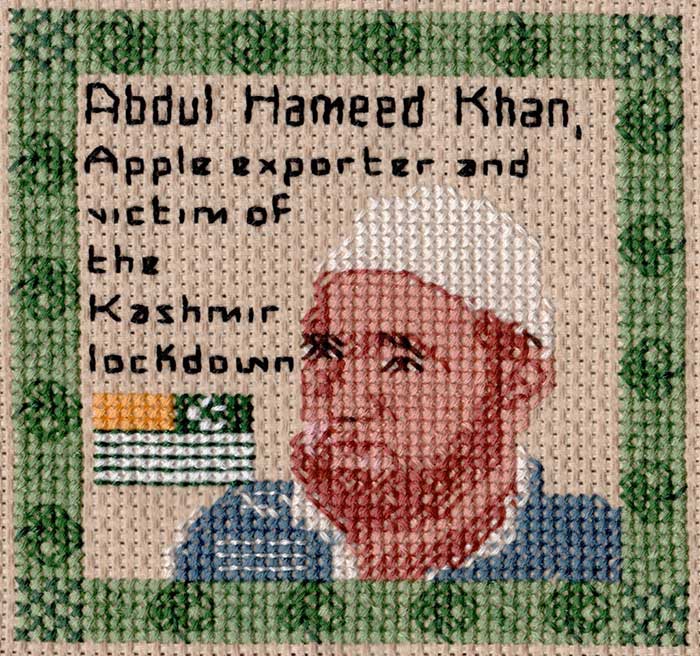Introduction
The Notification issued by the Reserve Bank of India (RBI) on October 7, 2019, as per Modi government’s directive with a view to “Deepening Digital Payments” across the country is of far-reaching consequences. The Notification contains the essential guidelines fora “pilot project” to convert one selected district in every state of India into fully digital or “cashless” in all financial payments and transactions by the end of 2020.Obviously, this pilot project is envisaged as a prelude to the eventual transformation of India as a full-fledged cashless society in the near future. Accordingly, the task for achieving this time-bound task is entrusted with the concerned ‘Lead Bank’ of the respective district in coordination with the administrative head, the District Collector. Instructions from RBI have already gone to the State/UT Level Bankers Committees(SLBCs/UTLBCs) “to identify one district in their respective State/UTs for digital payment ecosystem on a pilot basis in consultation with banks and stakeholders” and the district identified “shall have significant footprint which will attempt to make that district 100 percent digitally enabled within one year.” The RBI Notification has also directed SLBCs/UTLBCs to ensure that such “cashless’” districts identified are converged with the “Aspirational Districts”already identified by NITI Aayog for “good governance” as part of Modi’s “Digital India” Program.
Of course, this strategic decision is not an overnight development. Its roots lay deep in the Demonetization superimposed on India by Modi at the behest of neoliberal-corporate centres. A Committee headed by Nandan Nilekani who spearheaded the Aadhar, world’s biggest biometric exercise (which, contrary to its declared objectives, has no empirical evidence on improving welfare delivery) has been working on this issue since Demonetization. Accordingly, the “High Level Committee on Deepening Digital Payments” led by Nilekani submitted its Report to the RBI in May 2019. In fact, the RBI’s Notification issued on October 7 2019 in essence is a repetition of what elucidated in the Nilekani Report. As pointed out in the Notification, the pilot project that is envisioned on an experimental basis aims at multiplying India’s ‘per capita digital transactions’ by ten times within a year–estimated at 22 as of now to 220– and increase the number of “cashless” or “digital citizens” from the current 10 crore to 30 crore by the end of 2020!
A glance at both the Nilekani Report and RBI Notification unravels the process or the various steps required for accomplishing this “pilot project” for cashless transactions within the proposed time-frame. Among other things, they comprise a concerted campaign for opening zero-balance accounts for all who are outside the banking system, an increase in the number of smart phones, swiping machines (PoS machines or terminals), linking of bank accounts with Aadhar, popularization of BHIM Aadhar Pay, discouraging cash withdrawals from banks, developing ‘feature phones’ appropriate to cashless payments, and so on. The RBI Notification does not ascribe much importance to ATMs in the transformation process towards digitization or cashless transactions. The idea is to reduce the number of ATMs which are conventionally used for cash withdrawals and to transform them mainly as CDMs (Cash Deposit Machines) so as to suck out the cash in circulation. In a cashless society, the new role of ATMS would be that of ‘digital facilitation points’ which implies a recalibration of them for bill payments, currency transactions, tax payments, mobile recharging, ticket booking, etc. A proposal is also there for the creation of specific ‘digital wallets’ for all payments and receipts pertaining to government transactions. Together with the existing US-based ‘digital tools’ such as Master Card, VISA, Debit and Credit Cards, PayPal, Apple Pay, Google Pay, Paytm (controlled by Chinese giant Alibaba) which are widely used in India, emerging tools like Phonepe (controlled by Walmart, world’s biggest MNC) and initiatives toinvolve Whats App and Facebook are also in full swing.
Background for Modi Regime’s Cashless Move
The invention of money certainly led to an epoch-making transformation in human history like that of fire and wheel. It enabled human society to transform itself from the ‘primitive’ barter system (exchange of goods for goods) to a higher stage of development where money became a medium of exchange, store of value and standard of deferred payments. And till the end of the 20th century, in political-economic circles, there had been no talk ofa cashless society or replacing cash by digital payments. In fact, discussion on cashless transactions has its beginning only in the turn of the 21st century along with the origin and development of cross-border/transnational digital flows. Over a span of two decades, broadband connections have become more important than shipping lanes and, in terms of its economic significance, are now at par with the centuries-old trade in goods. While internet penetration in US is estimated at 80 percent of the population, the same is around two-third in EU and one-third in Asia whereas in India it is only one-fourth. On the other hand, the so called “digital divide” (people having no access to internet) has become a clear manifestation of mounting economic inequality not only between imperialist and oppressed countries but also among people and groups within countries. Today digital flows have become indispensable for the movement of goods, services and above all finance, and every cross-border transaction today has a digital component. Digital business which is already in trillions is still growing in double digits. At the same time, compared with the sphere of production, it has been in the sphere of circulation and finance that digital flows have become truly a catalyst.
It is in this context that digital technology and data flows are becoming the driving force for cashless transactions. And, quite logically, the motive for this cashless initiative everywhere comes from the US- centred global corporate giants who are the custodians (with the exception of China today) of digital tools essential for cashless payments. However, ironically, among the countries which are much advanced in the realm of digital technology, only the Scandinavian countries are apparently moving towards a cashless economy. On the other hand, vast majority of the people in US which is much ahead of others in digital and network infrastructure, leading countries of EU and Japan are deadly against a cashless situation despite concerted efforts on the part of software giants, corporate financiers and monopoly banks in these countries which regularly propping up their respective governments for adopting digital payments.
For instance, with the backing of US Federal administration, various US-based software and digital giants as well as big banks are engaged in a massive and aggressive campaign for adoption of digital payments system. However such a move is vehemently opposed by various state governments in US. This has prompted the digital MNCs to target the so called ‘emerging economies’ in Afro-Asian-Latin American countries by influencing amenable regimes there. As a manifestation, various companies including VISA, Master Card, Citibank, Gates Foundation, Dell Foundation, etc. joining with the USAID (United States Agency for International Development) have already formed the “Better Than CashAlliance” initiative for seriously taking up the cashless agenda amidst stiff domestic opposition to such a move in the US. The aim of this Alliance was to manipulate policy decisions in backward economies thereby superimpose cashless payments on global people.
The ascendance of Modi regime in 2014 and the Prime Minister’s proclamation on “Digital India” program in the following year should be seen in this context. And, as an appendage of the Better Than Cash Alliance, an initiative entitled “Catalyst” with the involvement of Indian Ministry of Finance started work in since 2016. Catalyst began its operations based on the guidelines codified by USAID under what is called “Beyond Cash”. Alok Gupta, Director of Washington-based World Resources Institute, who cooperated with NandanNilekani in designing Aadhar was appointed as Indian Chief Operating Officer of Catalyst. According to available evidence, US think-tanks including neoliberal-far right economists like Larry Summers and Reghuram Rajan were associated with this project in its beginning stage. In fact, the launching of Unified Payment Interface (UPI) as the brainchild of Rajan is considered as the forerunner of cashless initiative in India. As RBI governor, it was he who imposed restrictions on cash withdrawals from ATMs, even as 37 crore new bank accounts were opened in India under Pradhan Mantri Jan DhanYojana during 2014-18 preparing the background for the move towards cashless payments. No doubt, corporate-saffron forces effectively used these Jan Dhan accounts as a convenient tool for whitening huge volumes of unaccounted black money during the opaque days of Demonetization which was a “guinea-pig” experiment superimposed on the Indian people with intellectual inputs from the USAID-led Catalyst-an aspect to be taken up in the ensuing discussion.
Meanwhile, Catalyst had attempted at launching “cashless townships” in six Indian cities- Indore, Visakhapatnam, Kota, Jaipur, Bhopal and Nagpur- on an experimental basis as part of its action plan towards a making India perfectly cashless or digital. These six cities had been selected based certain criteria such as the use and popularity of smart phones, number of digital money transfers, the availability and familiarity with digital tools among vendors and merchants at the local level, various administrative factors essential for such an experimentation and so on. As noted above, and as well-documented by international sources (see Select References attached), it was in this overall background that at the behest of neoliberal-corporate think-tanks,Modi imposed Demonetization in November 2016 that enabled the most corrupt corporate big businesses and crony capitalists hand in glove with the ruling party to have the biggest-ever one-shot wealth accumulation in history by abruptly sucking out the life-blood of more than a billion people and at the same whitening all corporate-black money hoardings through banks.
Totally paralyzing all cash-based economic activities especially in the informal/unorganized sectors that provide sustenance and livelihood to more than 90 percent of the Indian workforce, Demonetization led to an unprecedented squeeze of the entire economy resulting in the biggest unemployment and economic slowdown in five decades coupled with a galloping of all kinds of money-spinning businesses and ballooning speculation at the macro level, thereby transforming India as the most corrupt country in Asia within a year. Of course, while Modi himself was immersed in the post-truth campaign of interpreting Demonetization as “surgical strike” against terror funding, black money and counterfeiting and tried to whip up Islamophobic and Hindutva chauvinist sentiments in the process, in those crucial days, it was left to Gurumurthy, the leading RSS intellectual and member of RBI Director Board to reiterate at the behest of imperialist centres that the true aim of Demonetization was to achieve a state of cashless or digital payments. No doubt, the latest RBI Notification regarding pilot project on “digital districts” is a logical corollary and continuation of both Demonetization and Catalyst-sponsored “cashless townships” already experimented in the country. Revealingly, as the RBI itself acknowledges, a copy of this RBI Notification was forwarded to USAID-led Catalyst too.
General Consequences of Cashless Economy
The immediate outcome of a cashless economy would be total alienation or marginalization of those who (a) have no bank accounts, (b) having no cash in their accounts, (c) having no access to the appropriate ‘digital payment tools’, and/or (d) not having the technical know how required for operating them. In spite of the enrolment of millions of “zero-balance accounts” initiated on a war-time footing under Jan Dhan Yojana after Modi’s coming to power, only 60 percent of the 135 crore of Indian population has even namesake bank accounts (many of them are reported to be bogus or benami accounts too).In the event of India moving to a full-fledged cashless or digital payments system, the custodians of the entire cash or currency in the country will be big banks or such other financial entities. This will automatically “disenfranchise” those who have no valid bank accounts or those unable to operate such accounts through proper digital tools. That is, when the Modi regime under the guise of “financial inclusion” is engaged in “digitizing citizens” it needs to be understood in effect as an ingenious corporate-fascist agenda of denying citizenship itself to the marginalized and oppressed. Therefore, at a time when 30 crore Indians (almost equal to the total population of USA) are below the official poverty line and around 50 crore of people having no bank accounts still being outside the banking net, this superimposed cashless project, contrary to the claims of its proponents, is leading to “financial exclusion” and not “financial inclusion”.
Let us see the whole issue of cashless payments from an international perspective too. That the US has already reached saturation regarding the availability of smart phones with iPhone and Android facilities and credit/debit cards is a widely conceived fact today. Moreover, as already noted, the US today still continues(in spite of cut-throat competition from the Chinese digital giant Huawei) to be the biggest source of the digital/software tools such as VISA, Master Card, Apple Pay, Google Pay, Venmo, Square Cash, which have become indispensable for maintaining “digital imperialism”. Again, Walmart, the US-based biggest MNC, for instance, has its majority holding in the software tool such as Phonepe (as is the case with the Chinese giant Alibaba’s involvement in Paytm).As a result, in the World Digital Competitiveness Ranking, the US holds the top-most position today, and that of Sweden, which is moving towards cashless economy has third ranking in this regard, whereas India’s ranking is 44th among 60 countries. Thus, with all the necessary requirements, US is most favourably situated for embracing total digital payments. A study conducted by the Tuft University and published in May 2016 Issue of Harvard Business Review had unequivocally identified US, Japan, Germany, France, Belgium, Spain, Czech Republic, Brazil and China in that order as ideally placed on account of their technological capabilities and social realities to move towards a cashless situation. No doubt, as already mentioned, the formation of corporate-sponsored “Better than Cash Alliance” with its slogan “war against cash” took place in the US precisely in this context.
However, public opinion in the US from the very beginning has been vehemently against this pro-corporate cashless initiative. Upholding people’s sentiments, ten US states– Massachusetts, Connecticut, New Jersey, New York State, Washington State, Oregon, Rhode Island, Chicago, Philadelphia and California (whose GDP of $ 2.7 trillion with a population of 4 crore is equal to that of India with a population of 135 crore)—under the label “States for Cash” have enacted stringent laws with punitive measures against traders insisting on cashless payments. For example, in New Jersey, for the first violation of the law (i.e., forcing digital transfers), the fine is $ 2500 and for second violation the fine will be doubled to $5,000 (around Rs. 3.5 lac). Other states like California also have passed similar laws with criminal procedures and varying degrees of punishment. According to a New York City Council study, 11 percent of the New York residents does not have bank accounts at all. According to it, the superimposition of a cashless system of payments on the poor, immigrants and elderly who have no bank accounts is outright “disenfranchisement”, especially when the US Constitution does not insist bank account as a criterion for citizenship. In spite of having the highest potential for transforming in to cashless economy, most of the people in US prefer cash payments and more than 55 percent of transactions in the US are still under denominations of $ 10. In fact, this is the context that prompted the well-known online portal USA Today to declare “Cash is still King in USA”. The annual per capita digital transactions in the US is 474 compared with just 22 in India where the Modi regime totally cut off from concrete realities is shamelessly pursuing the cashless dream!
Specific Issues Concerning India’s Cyber Security
Issues connected with cyber security are of particular relevance when it comes to the case of India. According to cyber experts, digital flows/transfers with barely two decades of history are still like an unchartered territory. A recent BBC Report (bbc.com/worklife-101), has also pointed out the risks involved in the “payment over the cloud”and highlighted the need for proper studies on this emerging field. Serious attention is required regarding the issue of privacy. Of all digital dealings, financial transactions are subjected to highest level of surveillance and information manipulation not only by governments but also by private operators. While the rich and the powerful can ensure their privacy through extra payments, political activists and common people are always vulnerable and at the receiving end.
Cybercrimes and hacking connected with financial transactions are notorious. In this realm, India’s position is the worst. A 2015 Interpol Report situates India as having the lowest cyber security in the world. In that year, the Interpol noted around 111000 “violations” or “transgressions” in Indian cyber space. Assocham has endorsed these findings in a recent study and warned about more worries for India’s digital transactions in the near future. According to Chipset manufacturer Qualcomm, India’s hardware security is not at all compatible with digitization.It also points out how hackers can easily steal users’passwords from existing Android models. On November 15, 2019, the BBC News has released the revealing news of RBI seeking the help of “Group-IB”a Singapore-based cyber security agency to investigate the “status” of over 13 lakh Indian debit cards whose data base might have been stolen.Ironically, this RBI decision to investigate into India’s digital payments came in October 2019 when its Notification on cashless project was also released.
Still more shocking is a recent revelation made by “Group-IB” itself (The Hindu, February 8, 2020, Kochi Edition, p. 12)regarding the display of 461976 Indian card information for sale in a notorious “dark net” called “Joker’s Stash”! This hacking was possible solely because of the fragile nature of India’s cyberspace. The information leaked includes card numbers, their expiry dates, CVV / CVC codes, cardholder names, emails, phone numbers and addresses. As estimated by “Group-IB”, these data basestolen probably from PoS terminals is worth over Rs 30 crore in the cyber market. Yet another case is regarding the recent leakage through social media of passwords and e-mail ID of around 30000 customers from Flipkart’s e-wallet. Personal details hacked thus were later put on the website ‘Throbin’. Another instance pertains to a recent hacking of e-mail accounts of almost 3000 government officials at ISRO, IGCAR (Indira Gandhi Center for Atomic Research), BARC and SEBI. According to analysts, these are only tip of the iceberg. Cyber violations in India where majority of victims are common people are less reported. For instance, millions and millions of informal and unorganized workers who migrate across different states within India and who are forced to use debit cards are often victims of cyber-security breaches. According to a BBC Report, it is the first-time users of net transfer in India who are facing major financial frauds. Amidst such reports which have become frequent, the obscurantist saffron regime’s rhetoric on digitization without even having minimum cyber security arrangement has already exposed it before all the well-meaning people the world over.
The Sorry State of India’s Digital Infrastructure
As already mentioned, compared with other Asian countries, India is far behind in terms of digital infrastructure. It was fully exposed during the critical days of Demonetization when many people all over the country were died standing on the queue before ATMs and banks. Of course, in a cashless situation, the existing ATMswill have to be recalibrated as ‘digital facilitation points’, an aspect noted earlier. In spite of that, even in the case of per capita availability of ATMs, India’s position is among the lowest, even below that of the so called “least developed countries” as defined by World Bank. For instance, in the case of BRICS countries, Russia with 184 per capita ATMs ranks one, Brazil second (107), China third (81) and South Africa fourth (68), while India has only 17 ATMs per capita. And over the past three years, on account of bank-mergers and consequent closure of branches mainly in rural areas, the number of ATMS in India has declined further.
However, coming to the case of swiping or PoS machines (terminals) which are indispensable for cashless purchases and transactions, Indian situation is too pathetic. Though the availability of PoS machines in India has increased from around 14 lac during December 2016 to 35 lac as of now, a country with 135 crore of people, this is meagre compared to international standards. Regarding PoS machines, from the very beginning, India has been abjectly depending on China. Two Chinese companies, Veriphone and Ingenica are the sole suppliers of PoS machines for India. During the years following Demonetization, and in view of Modi’s ‘cashless dream’, China is reported to have increased the production of PoS machines by around 600 percent, even as there is no dearth of rhetoric associated with ‘Make in India’. A Chinese PoS machine that simultaneously performsvarious functions such as billing, accounting, data storage, and money transfer on an average costs Rs. 5 lac. Though a cashless economy inevitably eliminates vast-majority of petti and small retail traders as it would be impossible for them to bear the cost of installing PoS machines, even the financial burden (which will be put on the backs of consumers in the form service charges) on the average merchant would be unbearable. Though there are reports on some Indian companies in Bangalore (e.g., ZkTeco) producingPoS machines, their efficiency and capability compared with Chinese machines are reported to below standard. Thus, the much trumpeted ‘Make in India’ itself has now transformed into ‘Made in China’. It is often said that Modi has to fulfill his cashless dream by totally depending on the mutually contending two biggest imperialist powers in the world; on the US for all the software components and on China for the hardware.
Along with cyber security, in the concrete case of uninterrupted and efficient power supply, download speed, bandwidth availability and server capacity, India lags much behind even the neighboring countries like Nepal, Bangladesh and Sri Lanka. In terms of the Digital Networking Indexbased on a recent survey of 139 countries, India’s rank is 91 whereas, the same is still lower at 114 when it comes to the case of Basic Infrastructure Digital Transactions Index, as measured by international agencies. As reported by speedtest.net in December 2019, regarding mobile internet speeds of countries, India ranks 128th in the list of 140 countries. Further, the download speed of India is the lowest among BRICS countries at 11.46 Mbps (Megabits per second), while the world average is 32.01 (the highest speed is 103.18 which is in South Korea).
Given this extreme backwardness of India’s digital infrastructure and technology, the neoliberal advisers of Modiincluding Nilekani have suggested a “leap-frog” to overcome such hurdles for achieving the cashless dream. For instance, though the number of mobile phones in India comes to around 100 crore, according estimates, only 25 percent of the population has smartphones useful for digital payments. Hence the alternative suggested is to link Aadhar with BHIM and thereby develop BHIM Aadhar Pay as the main digital tool in the move towards digitization. Another suggestion is to make use of the new developments in digital technology such as “block chain”(capability of storing data as separate blocks as if in a chain) in accomplishing the declared objective.
But these claims have no basis and are only wishful thinking in view of India’s dismal experience with similar experiments in recent times. A best example is that of GST (Goods and Services Tax), which in many respects is a “digital tax”, that makes use of digital technology. Like the Catalyst-sponsored cashless project being super-imposed on India, the entire blueprint of GST that totally undermined the federal character of Indian Constitution itself was also designed by imperialist think-tanks. GST being the biggest postwar neoliberal tax reform, various institutions and agencies such as OECD, UNDP, IMF, World Bank, WTO, Pricewaterhouse Coopers (PwC), KPMG, Deloitte, Tax Inspectors Without Borders (TIWB), Forum for Tax Administration (FTA), etc. have actively coordinated their work with India’s National Institute of Public Finance and Policy to design it. All stakeholders including traders can become part of the GST regime only by registering themselves with the GSTN and can pay taxes only through its software. However here too, on account of the extreme inefficiency and backwardness of India’s digital/software technologythe GST experiment is in severe crisis today. Due to software malfunctioning, according to reports, more than 38 lac merchants across India are yet to submit their GST returns for the preceding year. In the specific case of the tiny state of Kerala, as of January31, 2020, only 25 percent of the registered traders has submitted their returns even for the fiscal year 2017-18–an issue directly linked with the non-viability and incompatibility of India’s basic digital technology with the avowed claims of its ruling classes.
Democracy and Freedom in a Cashless Society
Denial of the right to hold cash or currency, the universally accepted and time-tested tool or means for payments is inseparably linked with broader questions of freedom and democracy. Those who have no bank accounts and/or no cash in their accountsand have no access to the essential digital tools and/or not capable of to use them properly are the first to be deprived of their right to life, remain alienated and excluded in a cashless society.As mentioned earlier, digitization, like any other phenomenon is subsumed under class relations and concrete social divisions and the so called “digital divide” or “digital gaps” or “digital relations” arising from superimposition of digital payments will certainly reinforce existing socio-economic inequalities between and within countries and will “disenfranchise” the already deprived “other”. In a cashless economy, those who are not “digital citizens”, or those who are not “digitized” will be deprived of livelihood and basic sustenance and all those fundamental rights associated with ‘citizenship’ in spite of their being formal citizens.
Concrete details coming out from Scandinavian countries like Sweden which are moving towards the goal of cashless society pinpoint to many grass-root level difficulties including the problems faced by rural and elderly people on account of digitization. At a time when people are forced to be alert with many vexed issues of life, keeping the username and password, the ‘life-saving medicine’ in a cashless society always in one’s memory is an added liability. Loss or denial of one’s digital tool (e.g. smartphone) results in loss of one’s many rights associated with citizenship altogether. Why freedom-loving people should shoulder such unnecessary burdens? Digital payments will deprive people not only of their privacy, but even freedom associated with keeping cash with them. These are questions raised by well-meaning people even in countries like US which have the potential in terms digital technology for embracing cashless transactions.
Democracy giving way for Corporatocracy?
Obviously, cashless society is one where banks (and other financial entities) are the custodian of the entire currency stock in the country. This takes place under neoliberal corporatization, when banks are becoming the supreme arbiter or the decisive force in the economy. Today all socio-economic sectors are apparently becoming sub-structures of the bank-led financial superstructure that encompasses more than 90 percent of the entire economic activities. In this epoch, therefore, the ongoing close integration between corporate-led banks and the state regimes is the material basis of emerging neo-fascism everywhere. In a digitized and cashless economic system, real economic power will be in the hands of a few banking monopolies who control the entire monetary stock, the software giants and internet providers who provide the digital tools together with the neoliberal state. No wonder, ever since the advent of digitization, the biggest MNCs and billionaires have been digital-software giants or companies close to them. As is obvious, this directly results from the galloping profits especially from the digital-financial sphere. While there is no specific cost for physical cash/currency transfer/transaction among people, in a cashless economy, every swiping or digital transfer leads to a corresponding deduction in the form of service charge / fee/commission from the bank account of those involved. For instance, when any number of physical exchange of a hundred rupee note among persons can be done cost-free, the same through digital transaction will involve substantial deduction at every stage that directly goes into corporate coffers.
Very revealingly, Thomas Jefferson who drafted the US Constitution was reported to have warned in 1802 that banks controlling currency on account of their power to deprive people of their wealth would be more dangerous than standing armies. Later, in the “financial crash” of 1929 that led to the Great depression, this terribly destructive power of banks came to the fore such that,as part of New Deal, the Roosevelt government was forced to enact the Glass-Steagall Act for controlling bank-led speculation. Though controls were imposed on banks during the Keynesian welfare period that lasted till the early 1970s, with the collapse of Keynesianism and onset of neoliberalism, all controls on banks have been taken away. In the global financial crisis (“sub-prime crisis”)of 2008, the dangerous role of banks was once again exposed more than ever. But unlike the 1930s, in the absence of countervailing forces capable of resisting the most reactionary offensive from monopoly banks and finance capitalists, merging with the corporate interests of neo-fascist regimes, banking monopolies and financial corporations notorious for financial frauds and swindles are coming to the centre-stage of economic policy-making today. In this context, digitization and cashless transactions have imparted a new dimension to the unhindered power of banks. As people are becoming captives of bank-controlled digital finance having transnational dimensions, democracy is giving way to corporatocray.
India, a Guinea Pig for Cashless Experiment?
In this context, why the Modi government is so adamant in imposing the cashless project which is totally inappropriate and incompatible with the India’s digital capabilities and social realities is the pertinent question now. As the aforesaid analysis underscores, despite having all the required technological infrastructure and tools necessary for digital transactions, with the exception of a few Scandinavian countries, the reluctance to embrace cashless payments is very strong in most countries of EU, crucial US, and Japan. Not only regarding digital payments, but in the case of other political-economic issues too, these countries are quite unwilling to cast their lot with digitization. Their conspicuous opposition towards EVM-based voting and strong affinity to ballots are noteworthy. This is mainly due to the possibility of manipulating people’s voting preferences through the insertion of malicious software in to EVMs. Another example is that of GST. As mentioned earlier, it is an acknowledged fact that various US-based institutions and agencies were in the forefront of superimposing the neoliberal tax regime of GST over world people. But these agencies have not yet succeeded to convince the federal states in US who are vehemently opposed to a GST regime.
The fact that Modi regime under the cover of its nationalist pretensions has been opening up India for the digital experiments especially of US corporate interests assumes particular significance here. Reports from western sources amply show the manner in which “Better Than Cash Alliance”, Gates Foundation, USAID-led Catalyst and so on have manipulated the Modi regime for superimposing a cashless system in India. For instance, referring to the Demonetization exercise in India, Bill Gates, Head of world’s richest Foundation declared: “It is certainly our goal to make full digitalization happen in the next three years in the large developing countries. We have worked directly with the central bank there (India) over the last three years” (Norberthaering.de/en/war-on-cash/2-years-demonetisation). For carrying out this task, NachiketMor, Head of Gates Foundation in India actively worked as a member of the Central Board of the RBI. More informationon how under the pliable Modi government India has been made a “guinea pig” by US agencies for cashless experiments is already there in the public domain. A Report published by the Federal Reserve Bank of San Francisco in the aftermath of Demonetization also confirmed how it was a catalyst for transforming India in to a cashless society. Modi’s Digital India program, Report of the High Level Committee led by NandanNilekani, RBI Notification on Deepening Digital Payments and the ongoing pilot project in selected Indian districts, etc. should be analyzed in this broader context.
Conclusion
There is a tendency even among well-meaning people to summarily dismiss these ongoing Indian initiatives for a cashless society as an impractical daydream. However, fascism is a specific situation where many an agenda which were considered impossible and impractical in yesteryears become concrete realities today. For instance, a few years back, nobody in India would have thought of religion becoming a criterion for Indian citizenship. Or nobody ever had thought of a ‘’surgical attack” on the Indian people like Demonetization. In fact, an objective reading of contemporary Indian history shall make it amply clear that corporate-saffron fascists in India will go to any extent to appease neoliberal corporate interests, especially those emanating from the US. This calls for a serious evaluation of the pilot project for transforming selected Indian districts into cashless ones and a pan-Indian extension of it thereafter.
Meanwhile, Lead Banks in charge of the districts selected for the cashless experiment are reported to have started their work in close coordination with the district administration of the respective districts. Initiatives for enrolling all those who are outside the banking net are also in full swing. Efforts to install the necessary digital tools like PoS machines in government offices are also going on. Work for involving NGOs, self-help groups, micro-finance institutions, trade organisations and other peoples movements in the cashless project has been started. And an all-out offensive for creating people’s awareness on digital payments is in the offing. Of course, more information on this experiment having far-reaching consequences is still to come. Meanwhile, it is high time on the part of all well-meaning people to have an analysis and understanding on the cashless project in the proper perspective, and thereby enabling all democratic forces to approach this corporate (fascist) agenda in its multi-dimensional manifestations from a people’s perspective.
P J James is an economist and political commentator
Select References:-
- Report of the High Level Committee on Deepening of Digital Payments, May 2019 (rbidocs.rbi.org.in)
- Expanding and Deepening of Digital Payments Ecosystem, Reserve Bank of India (rbi.org.in/Scripts/Notification)
- Norbert Haering, “A welt-kept open Secret: Washington is behind India’s brutal experiment of abolishing cash” January 1, 2017 (norberthaering.de)
- Norbert Haering ,“More evidence of early US involvement in Indian de-monetisation”, January 7, 2017 (norberthaering.de)
- Norbert Haering, “Demonetisation in India was a great success—for the Better Than Cash Alliance” (norberthaering.de/en/war-on-cash/2-years-demonetisation)
- “Demonetisation is Catalysing Digital Payments Growth in India”, Federal Reserve Bank of San Francisco, April 12, 2017
- National Bureau of Economic Research, Working paper on Aadhar, https://bit.ly/2T2wSe8
- Global Round-up of the World of Work-worklife101(bbc.com/worklife-101)
- “The US will not be cashless any time soon”, February 2019, Forbes(www.forbes.com)
- “America has technology to go cashless, but too paranoid to do…”, Nov.17, 2016 (www.businessinsider.com)
- IMD World Digital Competitiveness Ranking 2018(www.imd.org)
- P J James, “Demonetisation as a weapon for Biggest Corporate Assault on People”, Red Star, December 2016 (www.cpiml.in)
- P J James, “Modi Shifts Goalpost as Demonetisation becomes a Fiasco”, Red Star, January 2017 (www.cpiml.in)
- Interpol-Cyber Security (cybersecurityintelligence.com)
15.Bhumika Khatri, “India’s Internet Speeds Growing Much Slower Than Other Countries and That’s a Problem” (
inc42.com/features/)
- Internet Bandwidth- Country Rankings (the global economy.com); also see, speedtest.net
- “11 Reasons Why Cash is Still King”, USA Today, June 14, 2017 (www.usatoday.com)
- “Cash is Still King in the Digital Era” (money.cnn.com)
- “Better Than Cash Alliance Lauds India’s Push for Digital Payments, Aadhar”, Nov.29, 2019 (livemint.com)
- Harvard Business Review, “60 Countries’ Digital Competitiveness Indexed” (sites.tufts.edu/digitalplanet/hbr)
- “Transforming the digital payments infrastructure”(www.livemint.com)
- “Thomas Jefferson on Banks” (www.snopes.com)


















